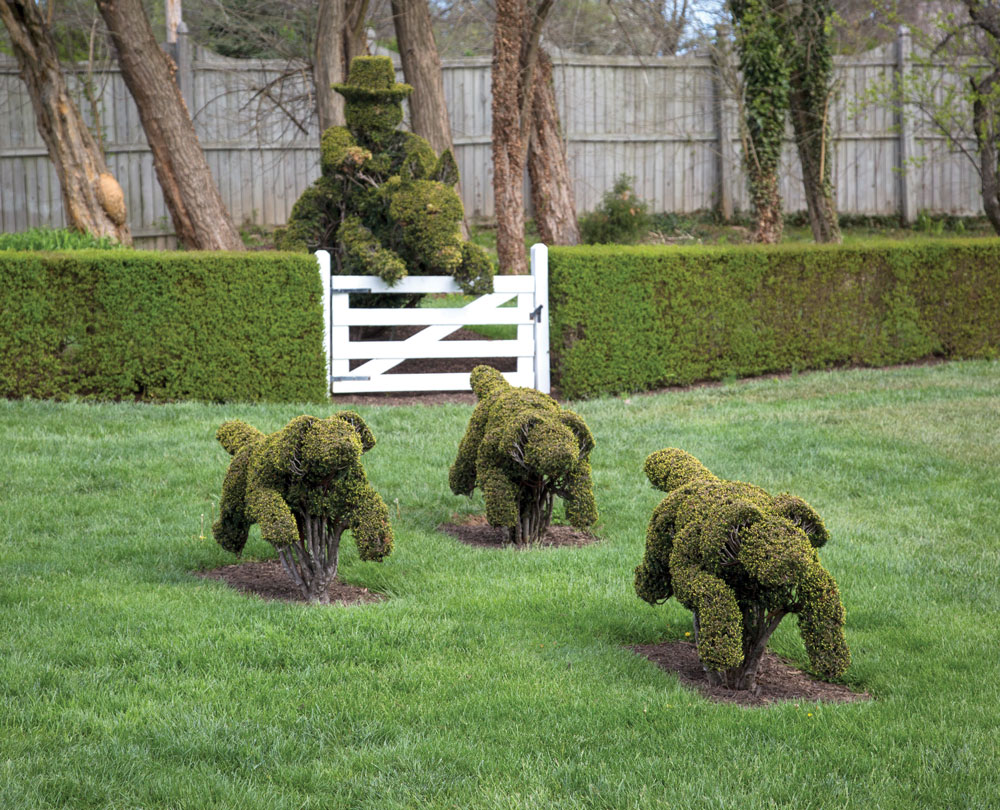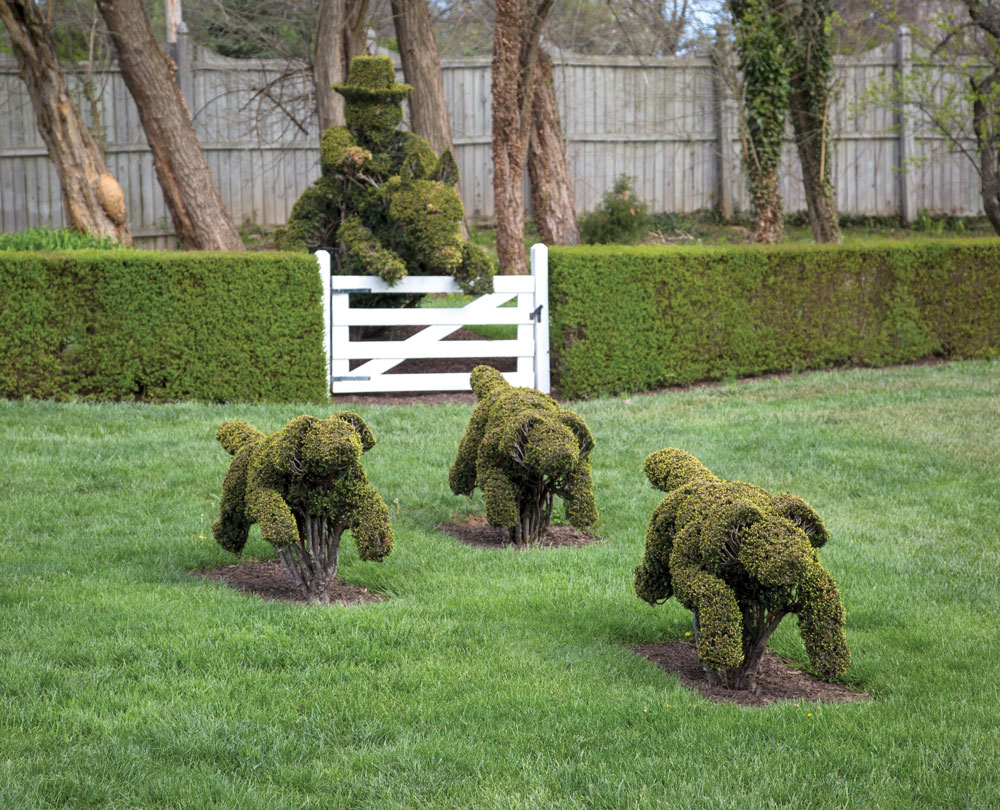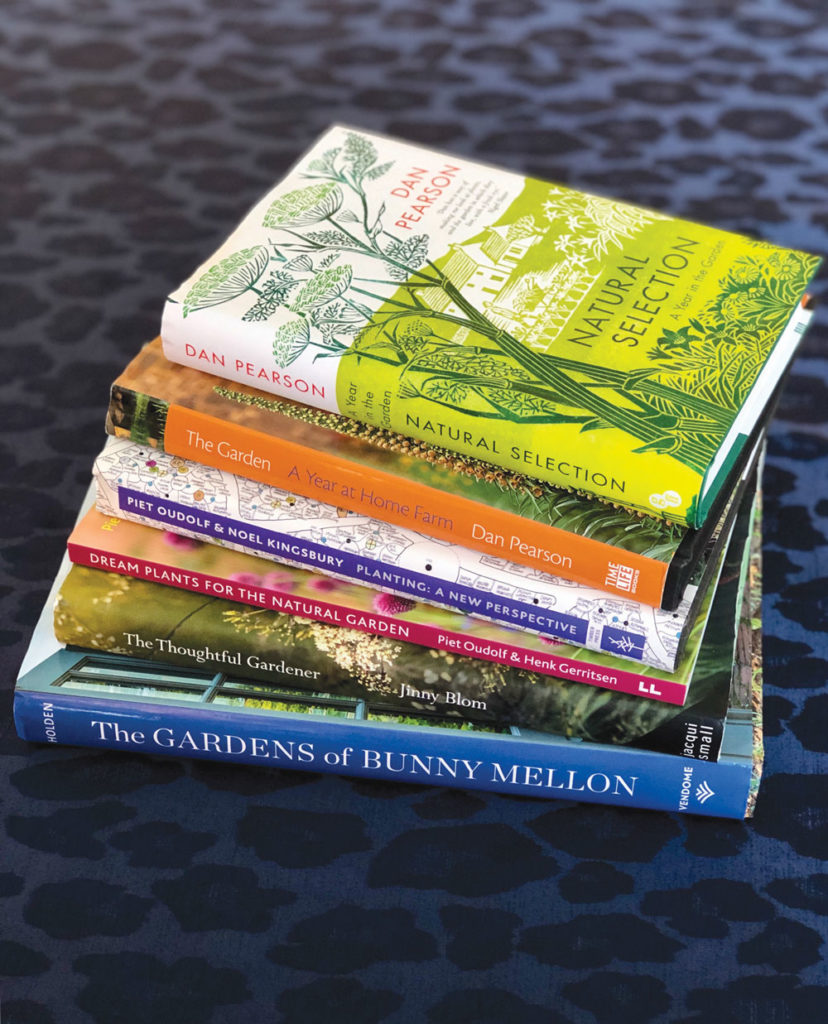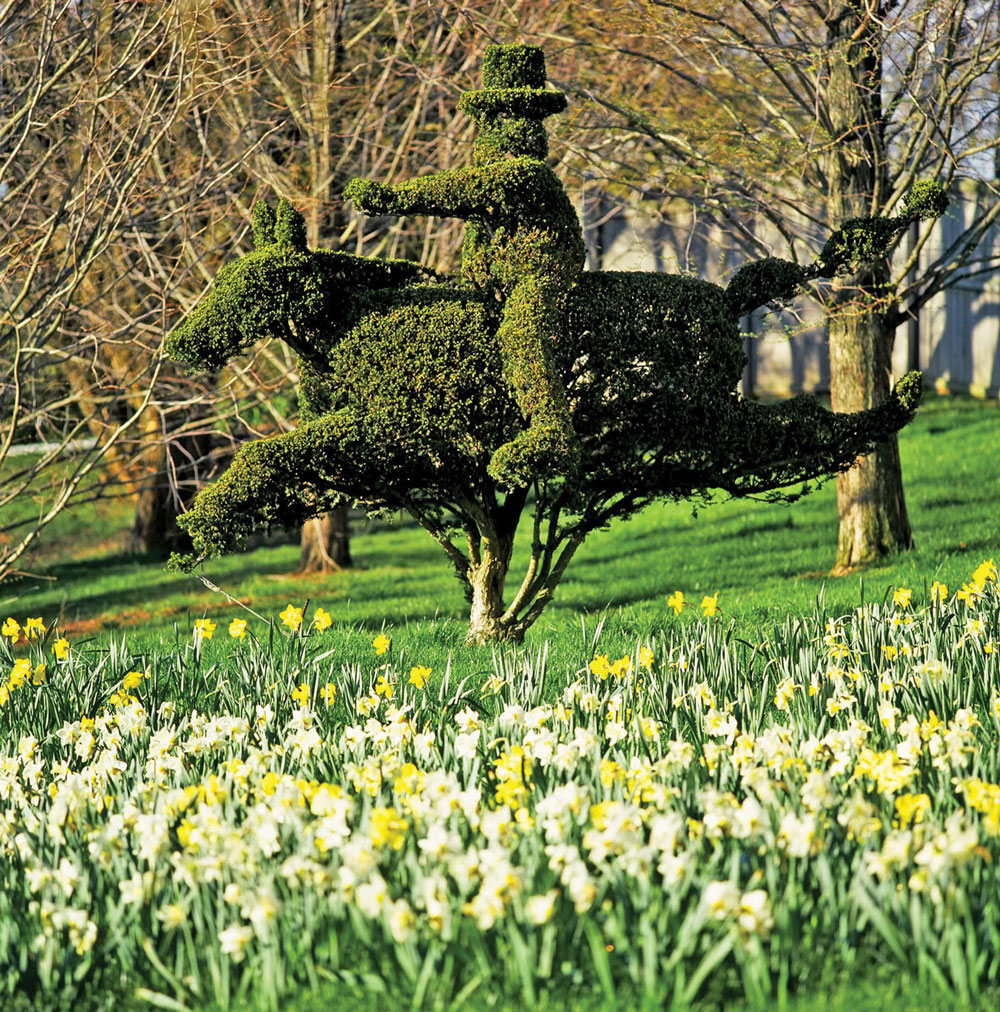Fearless gardens

By Ashley Bommer Singh
Photos by Helen Norman
We bought our farm six years ago this month. I am still mystified by the comfort we felt when we drove onto the property for the first time. The weather was grey and dreary. We knew no one here. However, the land, the history of the house, and the light spoke to us.
Living in the city, it was easy to be fearless. You had to be in order to survive. But here, the magnitude of the change in our lives was both a sense of opportunity and caution. That reticence affected the gardens. Afraid to disrupt the serenity of the property as we found it, I planted new perennials sparingly, one-by-one – in rows!
I just ordered a bold new fabric that has different spots all over it. Like a leopard, some are blurred, some close together, some big, some small. There is no pattern, and yet, there is a natural order. The spots are random, but they make a theme. That is now how I want my gardens to look, curated but also wild. What caused this freedom?

My gardens changed for the better after neighbors, Avis and Paul Hodge, gifted their treasured garden book collection to me. Every great garden book has a common thread: take risks, be fearless, try and fail. If you don’t like a plant, dig and begin anew. Embrace nature but go after weeds when you must. Be flexible, humble. Know what is in your hands and what is up to nature. Who knew gardening books could be a metaphor for life?
This cold, snowy winter, A Year at Home Farm by English garden designer Dan Pearson caught my eye. I was intrigued by a four-acre garden. This was the second garden that Pearson did for his client, and he chose plants for “the mood that they projected and how they could live in association with their partners, rather than for their individual horticulture identity.”
What mood do we seek when we plant our gardens? I love the wildness of Alchemilla mollis and Salvia nemorosa in tandem. I love how Monarda does perfectly fine with native milkweed and makes the monarch butterflies happy. I love how Achillea ‘Paprika’ can bloom confidently for months next to… asparagus. I gave up on dusty miller even though I admire it as a border plant and now stick with Nepeta ‘Walker’s Low’ for its tranquility. I like to eradicate weeds, but I do not like the mood or look of bark mulch. I much prefer matrix planting to fill in the space.

Garden designer Jinny Blom’s book, The Thoughtful Gardener, highlighted her first garden woes by “how stiffly I pooled and layered the plants.” She wrote, “But, it is important to learn, and learn I did!” I adore her gardens and was inspired to read that she once worked for Pearson before setting out on her own. Mentors help us take flight and be fearless.
Winter is the time to dream. I’ve always wanted a wind garden. I smiled when reading in The Gardens of Bunny Mellon that, upon reviewing the landscape plans for John F. Kennedy’s Presidential Library and Museum at the entrance of Boston Harbor, Bunny Mellon quipped that the president was “a wind man.” She suggested “planting beach grass and Rosa rugosa” to reflect this. The garden plans were reworked.
I am looking forward to planting different grasses in monochromatic blocks this spring – starting with native Panicum ‘Shenandoah’ to celebrate the winds that roar off the Blue Ridge Mountains through our north-facing entrance. Piet Ouldolf and Noel Kingsbury’s book, Planting – A New Perspective, notes “This kind of simple, calm, ordered planting can be a good point of relaxation after an exuberant perennial-filled border – like the sorbet course in a gourmet meal.”
Sometimes a garden visit can do more than a book. Inspired by whimsy, I checked out Ladew Topiary Gardens in Maryland on a rainy fall day. If evergreen animals and garden rooms are your thing, take note. If you are not sure, the foxhunting scene constructed out of yew will make your heart sing. My four-year-old loved running throughout the gardens, delighting in everything he saw. It was around Halloween and he made up a “Ladew Witch” to find. Where was she hiding? One day, Heuchera ‘Coral Bells’ and Baptisia ‘Purple Smoke’ may also capture his imagination!

And as the snowdrops show their dainty faces this month, take a gardening tip from Mr. Pearson and expand their magic carpet. He likes Galanthus ‘S. Arnott’ which flowers early in the season. After they flower, divide and replant, even in the cold. It is too hard to know where they are in the fall. Post flowering when their leaves are still green, you can see the patterns they’ve created and make new ones. Bold ones, of course, and not too regular.
This article first appeared in the February 2019 issue of Middleburg Life.


